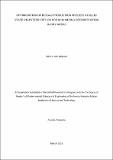Optimization of biogas production process in solid state digesters: option for minimizing deforestation in dry areas
Abstract
Questionnaire survey, satellite images of 1987, 1997, 2002 and 2017 were used to assess energy sources, demand and the impact of fuel wood use to forest cover changes in Meru and Mwanga districts. The major energy sources identified in the study areas included cow dung cake, fire wood, charcoal, biogas and liquefied petroleum gas. The total energy demand consumed from these sources were 1400, 6289, 724 and 21 kg per day per total sampled households respectively. The area covered with forest in Meru district was found to be 1510, 1723, 1612 and 1327 ha for 1987, 1997, 2002 and 2017, respectively. Area covered with forest in Mwanga was 31 705, 31 988, 17 939 and 30 960 ha for 1987, 1997, 2002 and 2017 respectively. A batch study to verify the appropriate and optimal mixing ratio of feedstocks was also done. The mixing ratios of cow dung to water ranged from 2:1, 3:1 and 4:1. Total solids determined were 120, 150 and 170 mg/g of fresh sample for the ratios 2:1, 3:1 and 4:1, respectively. Biogas yield for 2:1, 3:1 and 4:1 were 21.4, 22.7 and 46.4 mL/gVS, respectively. These results showed a promising future of the technology which can be adopted by all solid state digester users living in dry areas. Lastly, fuel wood consumption is a real threat to forest, however, use of renewable energy such as biogas could save forest degradation.

